In the weeks leading up to the US presidential election, Kacey Smith was feeling hopeful. Smith, who supported Vice President Kamala Harris’ campaign, says she knew it would be a close race between the Democratic nominee and Republican Donald Trump. But as she scrolled TikTok, she believed Harris would be victorious.
Technology
AGI is coming faster than we think — we must get ready now
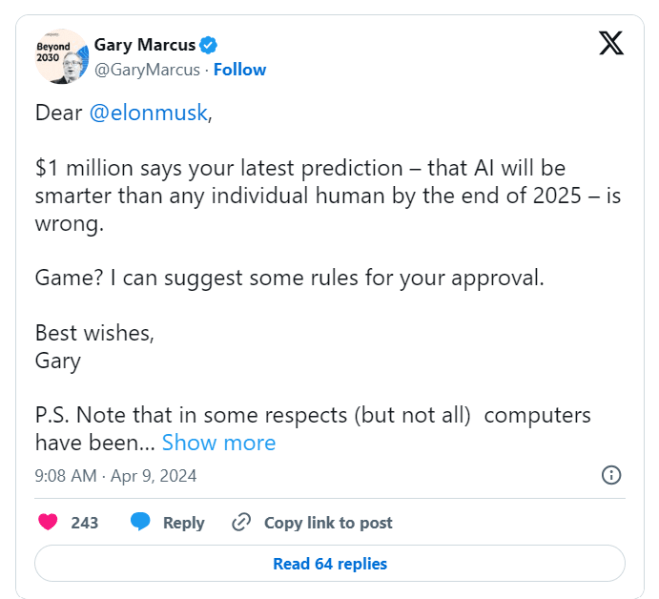
Join our daily and weekly newsletters for the latest updates and exclusive content on industry-leading AI coverage. Learn More
Leading figures in AI, including Anthropic’s Dario Amodei and OpenAI’s Sam Altman, suggest that “powerful AI” or even superintelligence could appear within the next two to 10 years, potentially reshaping our world.
In his recent essay Machines of Loving Grace, Amodei provides a thoughtful exploration of AI’s potential, suggesting that powerful AI — what others have termed artificial general intelligence (AGI) — could be achieved as early as 2026. Meanwhile, in The Intelligence Age, Altman writes that “it is possible that we will have superintelligence in a few thousand days,” (or by 2034). If they are correct, sometime in the next two to 10 years, the world will dramatically change.
As leaders in AI research and development, Amodei and Altman are at the forefront of pushing boundaries for what is possible, making their insights particularly influential as we look to the future. Amodei defines powerful AI as “smarter than a Nobel Prize winner across most relevant fields — biology, programming, math, engineering, writing…” Altman does not explicitly define superintelligence in his essay, although it is understood to be AI systems that surpass human intellectual capabilities across all domains.
Not everyone shares this optimistic timeline, although these less sanguine viewpoints have not dampened enthusiasm among tech leaders. For example, OpenAI co-founder Ilya Sutskever is now a co-founder of Safe Superintelligence (SSI), a startup dedicated to advancing AI with a safety-first approach. When announcing SSI last June, Sutskever said: “We will pursue safe superintelligence in a straight shot, with one focus, one goal and one product.” Speaking about AI advances a year ago when still at OpenAI, he noted: “It’s going to be monumental, earth-shattering. There will be a before and an after.” In his new capacity at SSI, Sutskever has already raised a billion dollars to fund company efforts.
These forecasts align with Elon Musk’s estimate that AI will outperform all of humanity by 2029. Musk recently said that AI would be able to do anything any human can do within the next year or two. He added that AI would be able to do what all humans combined can do in a further three years, in 2028 or 2029. These predictions are also consistent with the long-standing view from futurist Ray Kurzweil that AGI would be achieved by 2029. Kurzweil made this prediction as far back as 1995 and wrote about this in this best-selling 2005 book, “The Singularity Is Near.”
The imminent transformation
As we are on the brink of these potential breakthroughs, we need to assess whether we are truly ready for this transformation. Ready or not, if these predictions are right, a fundamentally new world will soon arrive.
A child born today could enter kindergarten in a world transformed by AGI. Will AI caregivers be far behind? Suddenly, the futuristic vision from Kazuo Ishiguro in “Klara and the Sun” of an android artificial friend for those children when they reach their teenage years does not seem so farfetched. The prospect of AI companions and caregivers suggests a world with profound ethical and societal shifts, one that might challenge our existing frameworks.
Beyond companions and caregivers, the implications of these technologies are unprecedented in human history, offering both revolutionary promise and existential risk. The potential upsides that could come from powerful AI are profound. Beyond robotic advances this could include developing cures for cancer and depression to finally achieving fusion energy. Some see this coming epoch as an era of abundance with people having new opportunities for creativity and connection. However, the plausible downsides are equally momentous, from vast unemployment and income inequality to runaway autonomous weapons.
In the near term, MIT Sloan principal research scientist Andrew McAfee sees AI as enhancing rather than replacing human jobs. On a recent Pivot podcast, he argued that AI provides “an army of clerks, colleagues and coaches” available on demand, even as it sometimes takes on “big chunks” of jobs.
But this measured view of AI’s impact may have an end date. Elon Musk said that in the longer term, “probably none of us will have a job.” This stark contrast highlights a crucial point: Whatever seems true about AI’s capabilities and impacts in 2024 may be radically different in the AGI world that could be just several years away.
Tempering expectations: Balancing optimism with reality
Despite these ambitious forecasts, not everyone agrees that powerful AI is on the near horizon or that its effects will be so straightforward. Deep learning skeptic Gary Marcus has been warning for some time that the current AI technologies are not capable of AGI, arguing that the technology lacks the needed deep reasoning skills. He famously took aim at Musk’s recent prediction of AI soon being smarter than any human and offered $1 million to prove him wrong.

Linus Torvalds, creator and lead developer of the Linux operating system, said recently that he thought AI would change the world but currently is “90% marketing and 10% reality.” He suggested that for now, AI may be more hype than substance.
Perhaps lending credence to Torvald’s assertion is a new paper from OpenAI that shows their leading frontier large language models (LLM) including GPT-4o and o1 struggling to answer simple questions for which there are factual answers. The paper describes a new “SimpleQA” benchmark “to measure the factuality of language models.” The best performer is o1-preview, but it produced incorrect answers to half of the questions.

Looking ahead: Readiness for the AI era
Optimistic predictions about the potential of AI contrast with the technology’s present state as shown in benchmarks like SimpleQA. These limitations suggest that while the field is progressing quickly, some significant breakthroughs are needed to achieve true AGI.
Nevertheless, those closest to the developing AI technology foresee rapid advancement. On a recent Hard Fork podcast, OpenAI’s former senior adviser for AGI readiness Miles Brundage said: “I think most people who know what they’re talking about agree [AGI] will go pretty quickly and what does that mean for society is not something that can even necessarily be predicted.” Brundage added: “I think that retirement will come for most people sooner than they think…”
Amara’s Law, coined in 1973 by Stanford’s Roy Amara, says that we often overestimate new technology’s short-term impact while underestimating its long-term potential. While AGI’s actual arrival timeline may not match the most aggressive predictions, its eventual emergence, perhaps in only a few years, could reshape society more profoundly than even today’s optimists envision.
However, the gap between current AI capabilities and true AGI is still significant. Given the stakes involved — from revolutionary medical breakthroughs to existential risks — this buffer is valuable. It offers crucial time to develop safety frameworks, adapt our institutions and prepare for a transformation that will fundamentally alter human experience. The question is not only when AGI will arrive, but also whether we will be ready for it when it does.
Gary Grossman is EVP of technology practice at Edelman and global lead of the Edelman AI Center of Excellence.
DataDecisionMakers
Welcome to the VentureBeat community!
DataDecisionMakers is where experts, including the technical people doing data work, can share data-related insights and innovation.
If you want to read about cutting-edge ideas and up-to-date information, best practices, and the future of data and data tech, join us at DataDecisionMakers.
You might even consider contributing an article of your own!
Source link
Technology
Netflix’s Back in Action teaser trailer: Cameron Diaz teams with Jamie Foxx to play spies


For her first film since 2014, Cameron Diaz is teaming with Jamie Foxx to play spies in Back Action, an upcoming action comedy from Netflix.
After working for the CIA as spies, Emily (Diaz) and Matt (Foxx) leave espionage behind to start a family. Years later, the couple returns to the field after their cover is blown. “For the first time in a really long time, I felt alive again,” Emily tells Matt in the teaser trailer. Rediscovering their elite combat skills is easy. Explaining their previous life to their two kids (McKenna Roberts and Rylan Jackson) is challenging.
When his son asks if he’s Jason Bourne, Matt says, “Yeah, but we remember stuff.”
Back in Action‘s ensemble features Kyle Chandler, Glenn Close, Andrew Scott, and Jamie Demetriou.
Seth Gordon, who directed Foxx in Horrible Bosses, helms Back in Action from a script he wrote with Neighbors scribe Brendan O’Brien. Gordon produces alongside Beau Bauman, Jeno Topping, Peter Chernin, and Sharla Sumpter Bridgett.
Like her character in the movie, Diaz is ending her acting retirement after 10 years. In 2014, Diaz appeared in The Other Woman, Sex Tape, and Annie. After Annie, Diaz took an extended break from acting, with the actress confirming her retirement in 2017.
Back in Action will not be a one-off, as Diaz has several acting projects lined up. The Mask actress will appear in Jonah Hill’s Outcome, an Apple TV+ comedy with Keanu Reeves. Diaz will also reprise her role as Princess Fiona in Shrek 5, which opens in theaters on July 1, 2026.
Back in Action streams on Netflix on January 17, 2025.
Technology
TSMC-made Exynos chips could now be possible
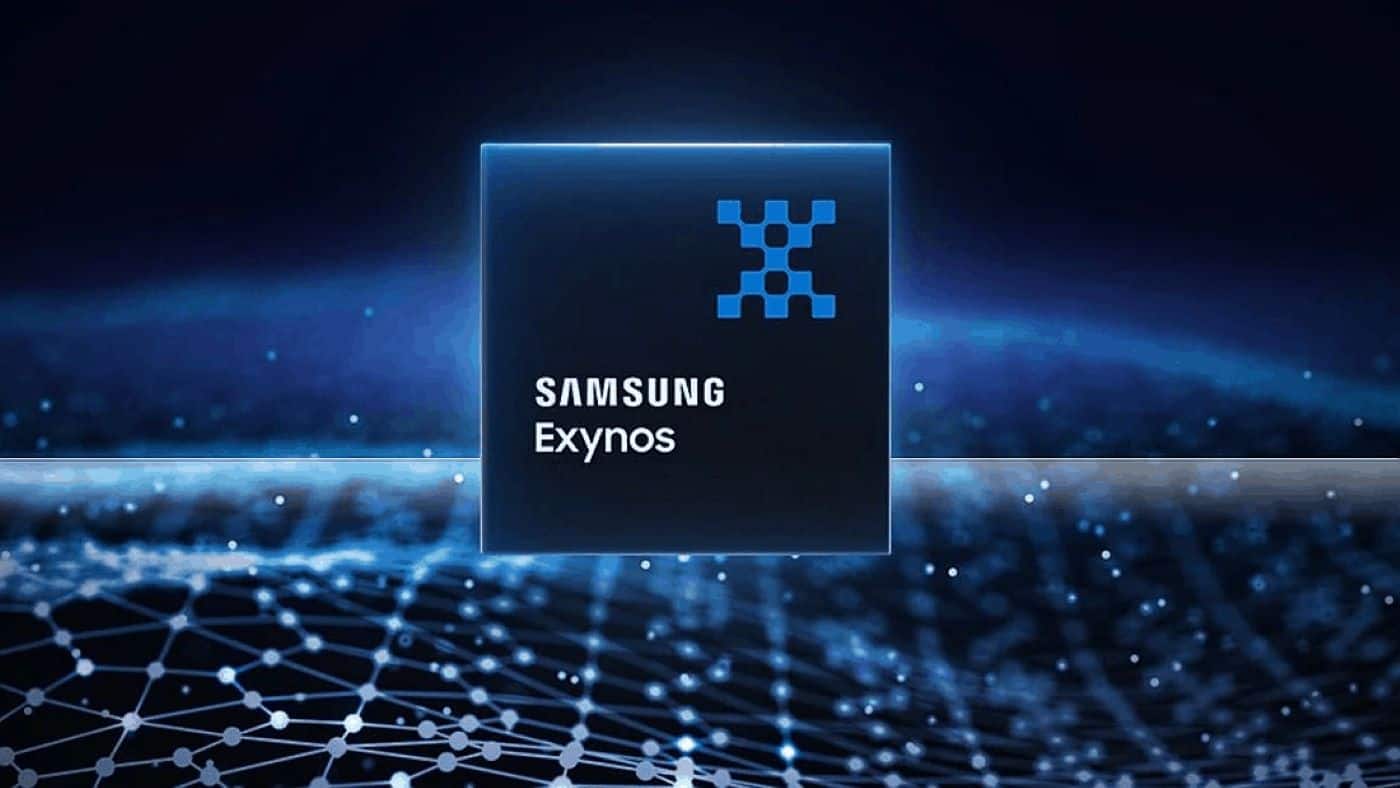
Samsung may be making a radical change regarding the manufacturing of Exynos chips. The company produces its own SoCs at Samsung Foundry factories. However, it has not been up to the task of efficiently manufacturing 3nm chips. According to reports, it has been working to try to resolve the situation. Now, a reliable tipster claims that Samsung is considering outsourcing Exynos chip manufacturing to TSMC.
TSMC is currently the largest contract chip manufacturer in the world. Big Samsung customers have moved to TSMC in recent years due to problems at the South Korean giant’s factories. However, Samsung’s potential decision to switch to TSMC for Exynos chip production is still striking.
Samsung reportedly considering turning to TSMC to manufacture Exynos chips
Tipster Jukanlosreve posted on X the news about Samsung considering turning to TSMC factories. The source doesn’t offer any further details on this, but the recent background regarding Samsung Foundry explains the potential move. Industry insiders claim that the Galaxy S25 series will use the Snapdragon 8 Elite chip worldwide. Apparently, solving the low yield issues of the company’s 3nm GAA wafers will take longer than it has available.
Samsung considering using external factories to produce its Exynos chips is quite normal. This doesn’t mean that it will happen with total certainty, however. Big brands always need contingency plans in place for any incidents or problems that may arise during a project. What’s surprising is the company turning to its main rival in the chip production segment.
In recent weeks, tipsters revealed that Samsung even explored the possibility of using the Dimensity 9400 chip in the vanilla and Plus models. The company also tested the Exynos 2500 until the last minute, hoping to resolve Foundry’s issues. However, it seems that Samsung will have to turn to Qualcomm for the hardware that will power its next flagship mobile devices. Therefore, switching to TSMC could serve as a backup plan in the event that problems persist with Samsung Foundry wafers.
Samsung’s move to a 3nm process has been problematic
In the recent past, chips manufactured by Samsung have presented issues related to temperature management, throttling, and modem performance. The company seemed to have solved these problems with the 4nm Exynos 2400 chip, which performs admirably. However, the difficulties returned when Samsung tried to migrate to the more advanced 3nm process.
Technology
Apple’s M2 MacBook Air with 16GB of RAM drops to $749 ahead of Black Friday
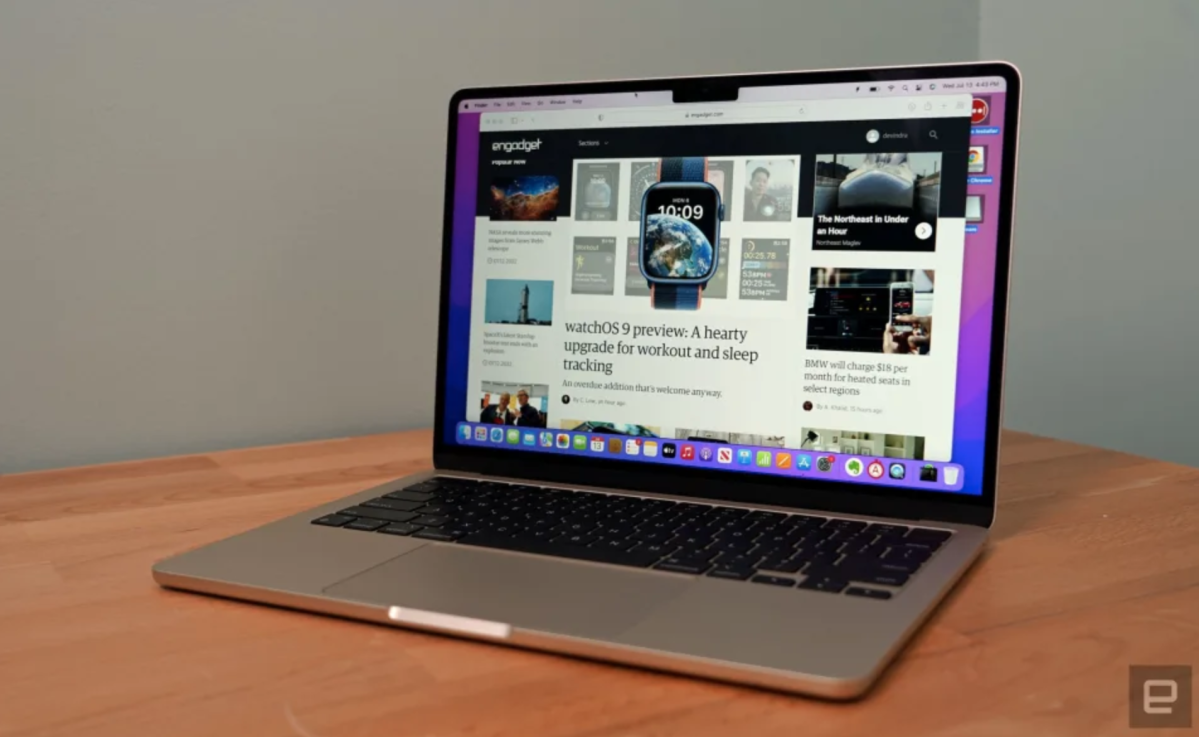
Black Friday is set to soak the world in glorious deals, but why wait until later in the month? Some of these deals are already live. For instance, the M2 MacBook Air . The regular price is $1,000, so this is a discount of 25 percent. It even boasts 16GB of RAM.
This model easily made , even with the presence of the . Here are the takeaways. This laptop, obviously, includes Apple’s proprietary M2 8-core CPU, which is more than fast enough for basic tasks and fine for even many advanced tasks, like music-making. We called it “Apple’s near-perfect Mac” in our official review.
This is not the bare-bones standard model, as it comes with 16GB of RAM. Most versions ship with 8GB of RAM. The multitasking bona-fides are strong with this one. The M2 MacBook Air also ships with a 13.6-inch Liquid Retina display with 500 nits of brightness and support for the P3 wide color gamut.
It’s thin and light. It’s a MacBook Air. This thing weighs around 2.7 pounds. The battery life is solid, at around 18 hours of use per charge. The four-speaker sound system can get surprisingly loud, so headphones are not a requirement when watching random YouTube videos or listening to music.
So what’s the downside? There isn’t one. Not really. This isn’t the M3 MacBook Air, so those looking for the latest and greatest model may be let down. The model does only ship with a 256GB solid state drive, but it’s easy enough to plug in an external.
Check out all of the latest Black Friday and Cyber Monday deals here.
Technology
Mission Space launches next quarter to provide real-time space weather forecasts
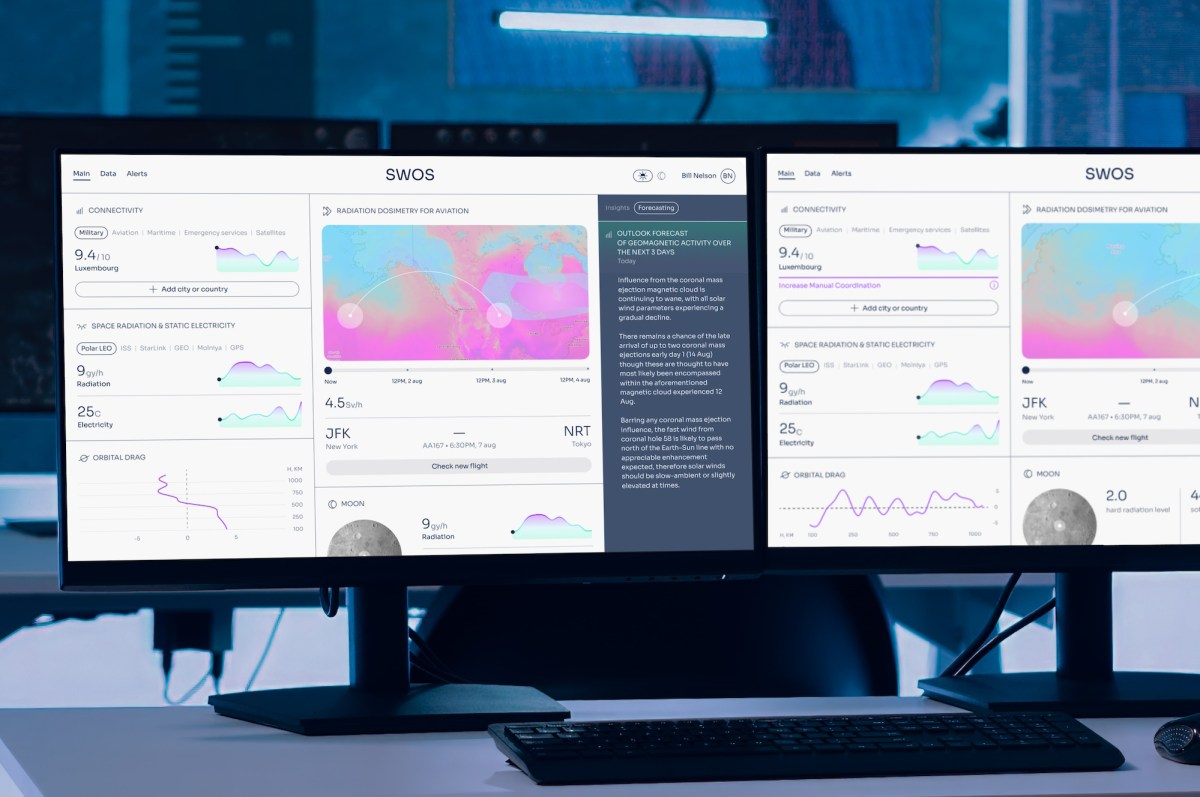
When you board a plane, the pilot already knows the weather on the flight path and can steer clear, or at least warn you it’s coming. The same can’t be said of “space weather” from solar events, which can seriously affect satellites and even passenger planes.
Mission Space is about to launch a constellation provide near-real-time monitoring of this increasingly important phenomenon.
Space weather is a general term for the radiation in the near-Earth environment; outside the planet’s protective aura, satellites and spacecraft feel the full brunt of the sun’s rays, and a solar storm can interfere with or disable them. The type and intensity of this radiation shifts and flows just like atmospheric weather, but being invisible and moving at the speed of light, it’s considerably more difficult to observe and predict.
There are numerous satellites and deep-space missions that monitor solar radiation, but they are necessarily limited; imagine trying to predict the path of a storm using only a handful of wind and rain sensors scattered across the ocean. And while historically this has been sufficient, the growth of the new space economy has transformed space weather from an occasional inconvenience to a constant and quantifiable threat.
“More and more companies are putting space weather on their agenda,” said Alex Po, CEO and founder of Mission Space. “We have 7,000 satellites in space, but in ten years it’ll be 50,000; that means space weather events will be the same as now, but they will have ten times the impact.”
A serious solar storm is not dangerous not only to electronics, but also to unprepared astronauts. If someone happens to be doing a spacewalk, they could get a face full of radiation — and if we want to establish a permanent presence on the Moon, where there’s similarly little protection, we’ll want to know exactly when it’s safe to go outside.
Nearer the surface, airlines are concerned about passengers getting large doses of radiation during a long flight over the poles, and some have even canceled flights because of it. And there are numerous secondary effects on services that rely on satellites, including precision agriculture.

Po’s startup, originally founded in Europe but now based in Israel and the U.S., is about to launch the first two of a planned 24-satellite constellation that will monitor space weather and provide reports and predictions in near real time.
It’s not intended to replace the scientific instruments currently in space, but augment their data (much of which is public) with a voluminous, proprietary stream that enables more precise, timely monitoring.
Po explained that while many companies and governments are increasingly aware of the need for better space weather prediction, the satellites are aging and the data is difficult to share.
“The infrastructure for space weather monitoring was developed in the late 90s, and many of the scientific models were developed 50 years ago,” Po said. Information sharing agreements between organizations like NASA, NOAA, and ESA are complex, and the data itself is not trivial to integrate and harmonize.
“There are no people in the companies who need this data who can understand it. What’s needed is, say, alerts for different alert levels for launch, or for airlines. Everyone uses weather data but no one thinks about how it is generated: you just want to know if it’s going to rain or not. It’s the same here,” he continued.
Mission Space currently uses public sources, doing the work of normalizing it to create something of a unified data stream. But they are launching the first two of their own satellites in the first quarter of 2025, with more planned for later that year. Po said they could probably launch faster, but that it’s more beneficial to learn from the first set and improve as they go. “Engineers…” he said, “There are always more changes.”

The satellites themselves (named Zohar) are specialized but not exotic, he noted, leading to a lower cost for a constellation of 24 than you might expect. The important part is that they still collect 15 parameters a thousand times a second.
“Space weather is a data monopoly game: the first to launch the constellation and build the infrastructure will win,” he predicted. “Even with half a constellation, in two years we will generate a thousand times more space weather data than humans have generated in the last 60. And the real-time data will let us develop machine learning models based on it.”
They are not in competition with governments and scientific organizations, he claimed, or really even startups looking to serve those customers — collaboration is a necessity for a number of reasons.
Their customers are “aerospace in general; satellite operators and space tourism companies; anyone doing private space stations. They’re all very aware of the problem,” said Po. “It was common knowledge in the aviation industry but now the companies are actually paying attention to solutions. And of course for defense, they’ve been developing the domain, and you must be sure you will not have issues in critical space operations. With the current level of precision, that’s hard for them.”
While the real-time readings and predictions will have to wait for the full constellation, the pair going up in a few months should offer a marked improvement over the existing offerings. No exact date is set for launch.
Technology
Pro-Harris TikTok felt safe in an algorithmic bubble — until election day
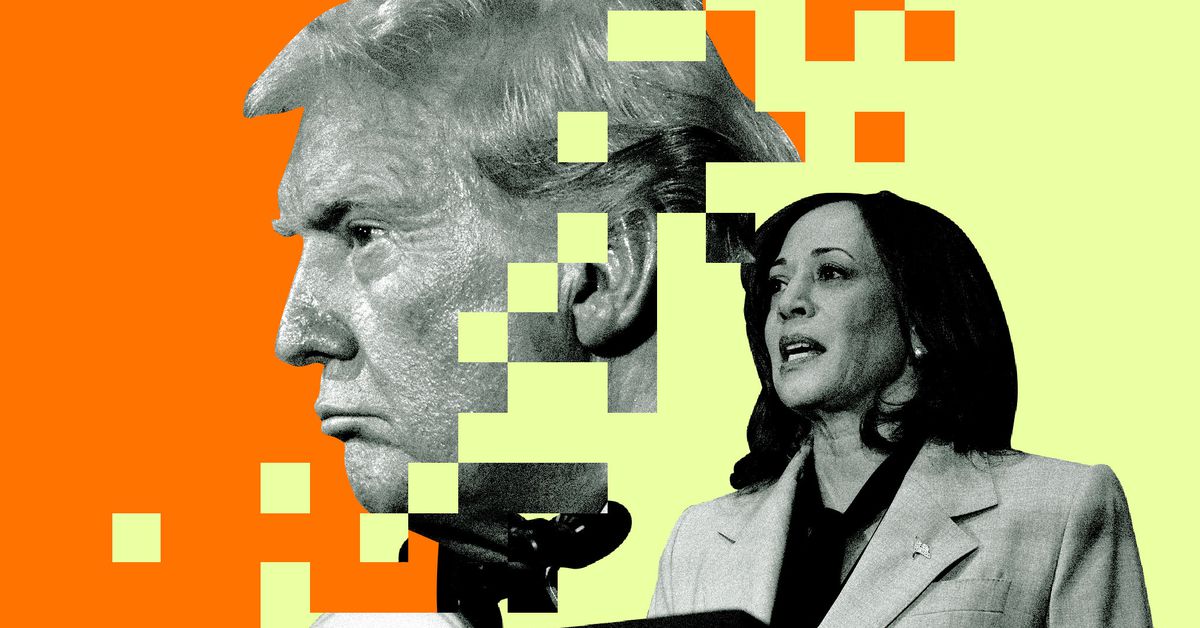
But Election Day approached, and she started to sense red flags in that positivity. She recalls TikTok serving her enthusiasm for reproductive choice with videos encouraging “women’s rights over gas prices” — implying, falsely, she thought, the choice was “either/or.” The rhetoric fit well inside her feed filled with strangers, but as a campaign strategy, it felt limiting and risky. “When I started seeing that messaging play out,” Smith says, “I started getting a little uneasy.” Her fears were borne out: Harris lost the popular vote and Electoral College and conceded the election to President-elect Trump.
Filter bubbles like TikTok’s recommendation algorithm are a common point of concern among tech critics. The feeds can create the impression of a bespoke reality, letting users avoid things they find unpleasant — like the real people in Smith’s life who supported Trump. But while there are frequent complaints that algorithmic feeds could serve users misinformation or lull them into complacency, that’s not exactly what happened here. Voters like Smith understood the facts and the odds. They just underestimated how convincingly something like TikTok’s feed could build a world that didn’t quite exist — and in the wake of Harris’ defeat, they’re mourning its loss, too.
TikTok’s algorithm is hyperpersonalized, like a TV station calibrated exactly to a user’s brain. Its For You page serves content based on what you’ve previously watched or scrolled away from, and breaking out of these recommendations into other circles of the app isn’t easy. It’s a phenomenon political activists must figure out how to adapt to, says Cristina Tzintzún Ramirez, president of progressive youth voter organization NextGen America.
“It not only makes it harder for us to do our job, I think it makes it harder for candidates to do their jobs. It makes it harder for news media to do their job, because now you’re talking about having to inform a public that has so many different sources of information,” she says.
From the onset, the Harris campaign seemed to understand the power of these silos. On TikTok, where the Kamala HQ account has 5.7 million followers, an all-Gen Z team of staffers produced video after video that are, at times, indecipherable to the average person. If you saw a video stringing together clips of Harris saying things like “Donald Trump was fired by 81 million people” and “I have a Glock” with a gentle Aphex Twin song as the soundtrack, would you understand it as “hopecore”? The campaign bet that it didn’t really matter because the TikTok algorithm would carry it to people who did understand it. And at least to some extent, they were right.
Smith, like other TikTok users, knows that the platform recommends her content based on what she watches, saves, comments on, or likes. When pro-Trump content came across her For You page, Smith would purposely not engage and simply scroll away.
“I don’t want my algorithm to think that I’m a Trump supporter, so I just want to scroll up and ignore it,” she says.
In hindsight, Smith wonders if that was the right thing to do or if a mix of different types of political content may have given her more insight into what the other side was saying, doing, and thinking. She likens it to being a liberal or progressive who consumes news from right-wing outlets like Breitbart or Fox News — not because you agree with the material, but because it’s helpful to know what messages are resonating with other types of voters.
The echo chamber effect isn’t limited to politics: we don’t even really know what is popular on TikTok generally. Some of what we see may not be guided by our preferences at all. A report by The Washington Post found that male users — even liberal men — were more likely to be served Trump content on TikTok than women. According to data from Pew Research Center, about 4 in 10 young people regularly get news from TikTok.
TikTok obviously isn’t the only filter bubble out there. Two years into Elon Musk’s purchase of Twitter, now called X, the platform has morphed into a right-wing echo chamber, with content boosted by Musk himself. While TikTok is simply (as far as we know) serving people things they like to sell ads, the slant on X was a deliberate electoral strategy that paid off handsomely for Musk.
“I don’t think we know the full implications of X’s algorithm being rigged to feed us right wing propaganda,” Tzintzún Ramirez of NextGen America says. A recent Washington Post analysis found that right-wing accounts have come to dominate visibility and engagement on X. That includes an algorithmic boost to Musk’s own posts, as the billionaire angles for influence with the incoming administration.
Unlike somebody drinking from Musk’s algorithmic fire hose, a young person deep in a pro-Harris TikTok bubble likely wasn’t being fed racist “great replacement” theory stories or false claims about election fraud. Instead, they were probably seeing videos from some of the hundreds of content creators the Democratic Party worked with. Though the direct impact of influencers on electoral politics is difficult to measure, NextGen America’s own research suggests that influencer content may turn out more first-time voters.
“I should know better than to be fooled”
Alexis Williams is the type of influencer that Democrats were hoping could carry their message to followers. For the last several years, Williams has made content about politics and social issues and attended the Democratic National Convention this year as a content creator, sharing her reflections with 400,000 followers across TikTok and Instagram. Though Harris wasn’t a perfect candidate in Williams’ eyes, she felt Harris would win the presidency in the days leading up to the election.
“As someone with a literal engineering degree, I should know better than to be fooled,” Williams says. She was fed TikToks about a bombshell poll showing Harris ahead in Iowa; young women in Pennsylvania going to the polls in support of Harris; analysis about why it was actually going to be a landslide. Professional polls consistently showed a dead heat between Trump and Harris — but watching TikTok after TikTok, it’s easy to shake off any uncertainty. It was a world full of what’s frequently dubbed “hopium”: media meant to fuel what would, in retrospect, look like unreasonable optimism.
TikTok and the Harris campaign didn’t respond to The Verge’s requests for comment.
For many voters on TikTok, the Kamala HQ content fit in seamlessly with other videos. The campaign used the same trending sound clips and music and a casual way of talking to viewers that seemed, at times, borderline unserious. (The Trump campaign also used popular songs and post formats but didn’t seem as native to the platform — more like a politician’s attempt at TikTok.) But Smith says that even as a Harris supporter, there was a limit to how much of that she could stomach. At a certain point, the trends get old, the songs get overplayed, and the line between a political campaign and everything else on TikTok starts to get blurry. Kamala HQ, Smith says, started to feel like just another brand.
Williams’ confidence began to break down on Election Day, as she walked to a watch party. “I know what I’m seeing on the internet and everything, but I still had [something] in my heart that was like, I don’t see us having another Donald Trump presidency, but I also don’t see a world where a Black woman gets elected for president right now,” she says. She started to wonder whether that much had changed in the eight years since the last female presidential candidate. “You’re seeing all this stuff, and people are getting so excited, but this could be just a mirage.”
Filter bubbles are not a new phenomenon, and voters have a wide range of places to get hyperpartisan news apart from TikTok: blogs, talk radio, podcasts, TV. Whether on the right or the left, there’s a tendency to look around at what you see and assume it’s representative. But the false sense of certainty that TikTok brings is perhaps even more powerful. What we see on the platform is both uncomfortably personal and incredibly global: a video talking about something that happened on our neighborhood block might be followed up by someone across the country voting for the same candidate for the same reasons. It gives an illusion that you are receiving a diverse assortment of content and voices.
As social media algorithms have gotten more precise, our window into their inner workings has gotten even smaller. This summer, Meta shut down CrowdTangle, a research tool used to track viral content on Facebook. A public TikTok feature called Creative Center — which allowed advertisers to measure trending hashtags — was abruptly restricted by the company after reporters used it to report on the Israel-Hamas war. It is harder than ever to understand what’s happening on social media, especially outside of our bubbles.
“As technology gets more advanced and more convincing, our idea of a communal reality might genuinely become archaic,” Williams says. “This election has really taught me that we are very much sucked into these worlds that we create on our phone, when the real world is right in front us.”
Technology
D-Link devices are already being attacked after the company said it would no longer support them


- Earlier this week, researchers discover a 9.2 flaw affecting multiple NAS models
- D-Link says it won’t patch them since they reached end-of-life status
- Crooks are now targeting them with available exploit code
Cybercriminals have begun targeting D-Link NAS devices, recently found to have a critical vulnerability, but which will not be patched due to being at their end of life.
Threat monitoring service Shadowserver recently sounded the alarm in a brief thread posted on X.
It was recently reported multiple versions of D-Link NAS devices were vulnerable to a 9.2-severity flaw that could allow hackers to interfere with the endpoints. However, as the devices had reached their end-of-life, the company said it would not be addressing the flaw, and would not be issuing a patch – instead, advising users to replace the devices with newer models.
Thousand(s) of victims
While the researchers said the exploitation was somewhat difficult since the complexity of an attack was relatively high, they did stress that there is a publicly available exploit out there.
“We have observed D-Link NAS CVE-2024-10914 /cgi-bin/account_mgr.cgi command injection exploitation attempts starting Nov 12th,” the researchers said. “This vuln affects EOL/EOS devices, which should be removed from the Internet.”
They added that in total, there were more than 60,000 endpoints out there that could be compromised, including different models such as DNS-320 Version 1.00,
DNS-320LW Version 1.01.0914.2012, DNS-325 Version 1.01, Version 1.02, and DNS-340L Version 1.08.
Shadowserver also said that it observed roughly 1,100 potential victims, significantly fewer than the 60,000 that were originally claimed.
A NAS device is a dedicated data storage unit connected to a network, allowing multiple users and devices to access and store data centrally. It provides secure file sharing, data backup, and storage, making it ideal for both home and business use. NAS devices are typically easy to set up and scale, offering RAID support and other protections against data loss.
Cybercriminals frequently target NAS devices because they often hold sensitive data, including personal documents, financial information, and business files. By compromising NAS systems, attackers can steal, encrypt, or delete valuable data, with ransomware being a common threat.
Via BleepingComputer
You might also like
-

 Science & Environment2 months ago
Science & Environment2 months agoHow to unsnarl a tangle of threads, according to physics
-

 Technology2 months ago
Technology2 months agoWould-be reality TV contestants ‘not looking real’
-

 Technology2 months ago
Technology2 months agoIs sharing your smartphone PIN part of a healthy relationship?
-

 Science & Environment2 months ago
Science & Environment2 months agoHyperelastic gel is one of the stretchiest materials known to science
-

 Science & Environment2 months ago
Science & Environment2 months agoX-rays reveal half-billion-year-old insect ancestor
-

 Science & Environment2 months ago
Science & Environment2 months ago‘Running of the bulls’ festival crowds move like charged particles
-

 Science & Environment2 months ago
Science & Environment2 months agoPhysicists have worked out how to melt any material
-

 MMA1 month ago
MMA1 month ago‘Dirt decision’: Conor McGregor, pros react to Jose Aldo’s razor-thin loss at UFC 307
-

 News1 month ago
News1 month ago‘Blacks for Trump’ and Pennsylvania progressives play for undecided voters
-

 News1 month ago
News1 month agoWoman who died of cancer ‘was misdiagnosed on phone call with GP’
-

 Money1 month ago
Money1 month agoWetherspoons issues update on closures – see the full list of five still at risk and 26 gone for good
-

 Sport1 month ago
Sport1 month agoAaron Ramsdale: Southampton goalkeeper left Arsenal for more game time
-

 Football1 month ago
Football1 month agoRangers & Celtic ready for first SWPL derby showdown
-

 Sport1 month ago
Sport1 month ago2024 ICC Women’s T20 World Cup: Pakistan beat Sri Lanka
-

 Science & Environment2 months ago
Science & Environment2 months agoA new kind of experiment at the Large Hadron Collider could unravel quantum reality
-
Business1 month ago
how UniCredit built its Commerzbank stake
-

 Science & Environment2 months ago
Science & Environment2 months agoMaxwell’s demon charges quantum batteries inside of a quantum computer
-

 Science & Environment2 months ago
Science & Environment2 months agoQuantum forces used to automatically assemble tiny device
-

 Science & Environment2 months ago
Science & Environment2 months agoSunlight-trapping device can generate temperatures over 1000°C
-

 Science & Environment2 months ago
Science & Environment2 months agoLiquid crystals could improve quantum communication devices
-

 Science & Environment2 months ago
Science & Environment2 months agoLaser helps turn an electron into a coil of mass and charge
-

 Technology2 months ago
Technology2 months agoUkraine is using AI to manage the removal of Russian landmines
-
Business1 month ago
Top shale boss says US ‘unusually vulnerable’ to Middle East oil shock
-

 Technology1 month ago
Technology1 month agoSamsung Passkeys will work with Samsung’s smart home devices
-

 MMA1 month ago
MMA1 month agoPereira vs. Rountree prediction: Champ chases legend status
-

 News1 month ago
News1 month agoNavigating the News Void: Opportunities for Revitalization
-

 Science & Environment2 months ago
Science & Environment2 months agoQuantum ‘supersolid’ matter stirred using magnets
-

 Technology2 months ago
Technology2 months agoRussia is building ground-based kamikaze robots out of old hoverboards
-

 Science & Environment2 months ago
Science & Environment2 months agoWhy this is a golden age for life to thrive across the universe
-

 News1 month ago
News1 month agoMassive blasts in Beirut after renewed Israeli air strikes
-

 Technology1 month ago
Technology1 month agoGmail gets redesigned summary cards with more data & features
-

 News1 month ago
News1 month agoCornell is about to deport a student over Palestine activism
-

 Technology1 month ago
Technology1 month agoSingleStore’s BryteFlow acquisition targets data integration
-

 Technology2 months ago
Technology2 months agoMicrophone made of atom-thick graphene could be used in smartphones
-

 Business1 month ago
Business1 month agoWater companies ‘failing to address customers’ concerns’
-

 Sport1 month ago
Sport1 month agoBoxing: World champion Nick Ball set for Liverpool homecoming against Ronny Rios
-

 Sport1 month ago
Sport1 month agoShanghai Masters: Jannik Sinner and Carlos Alcaraz win openers
-

 Entertainment1 month ago
Entertainment1 month agoBruce Springsteen endorses Harris, calls Trump “most dangerous candidate for president in my lifetime”
-

 Money1 month ago
Money1 month agoTiny clue on edge of £1 coin that makes it worth 2500 times its face value – do you have one lurking in your change?
-

 Technology1 month ago
Technology1 month agoEpic Games CEO Tim Sweeney renews blast at ‘gatekeeper’ platform owners
-

 MMA1 month ago
MMA1 month agoPennington vs. Peña pick: Can ex-champ recapture title?
-

 Technology2 months ago
Technology2 months agoMeta has a major opportunity to win the AI hardware race
-

 Science & Environment2 months ago
Science & Environment2 months agoITER: Is the world’s biggest fusion experiment dead after new delay to 2035?
-

 MMA1 month ago
MMA1 month agoDana White’s Contender Series 74 recap, analysis, winner grades
-

 MMA1 month ago
MMA1 month agoKayla Harrison gets involved in nasty war of words with Julianna Pena and Ketlen Vieira
-

 Sport1 month ago
Sport1 month agoAmerica’s Cup: Great Britain qualify for first time since 1964
-

 Science & Environment2 months ago
Science & Environment2 months agoNuclear fusion experiment overcomes two key operating hurdles
-

 News2 months ago
News2 months ago▶️ Hamas in the West Bank: Rising Support and Deadly Attacks You Might Not Know About
-

 Technology1 month ago
Technology1 month agoMicrosoft just dropped Drasi, and it could change how we handle big data
-

 Technology1 month ago
Technology1 month agoLG C4 OLED smart TVs hit record-low prices ahead of Prime Day
-

 Sport1 month ago
Sport1 month agoWXV1: Canada 21-8 Ireland – Hosts make it two wins from two
-

 News1 month ago
News1 month agoHarry vs Sun publisher: ‘Two obdurate but well-resourced armies’
-

 MMA1 month ago
MMA1 month ago‘Uncrowned queen’ Kayla Harrison tastes blood, wants UFC title run
-

 Technology2 months ago
Technology2 months agoWhy Machines Learn: A clever primer makes sense of what makes AI possible
-

 Science & Environment2 months ago
Science & Environment2 months agoNerve fibres in the brain could generate quantum entanglement
-

 Technology2 months ago
Technology2 months agoUniversity examiners fail to spot ChatGPT answers in real-world test
-
Travel1 month ago
World of Hyatt welcomes iconic lifestyle brand in latest partnership
-
Business1 month ago
It feels nothing like ‘fine dining’, but Copenhagen’s Kadeau is a true gift
-

 Football1 month ago
Football1 month ago'Rangers outclassed and outplayed as Hearts stop rot'
-

 Sport1 month ago
Sport1 month agoNew Zealand v England in WXV: Black Ferns not ‘invincible’ before game
-

 Sport1 month ago
Sport1 month agoURC: Munster 23-0 Ospreys – hosts enjoy second win of season
-

 News2 months ago
News2 months agoRwanda restricts funeral sizes following outbreak
-

 Technology1 month ago
Technology1 month agoCheck, Remote, and Gusto discuss the future of work at Disrupt 2024
-

 Technology1 month ago
Technology1 month agoNintendo’s latest hardware is not the Switch 2
-

 TV1 month ago
TV1 month agoসারাদেশে দিনব্যাপী বৃষ্টির পূর্বাভাস; সমুদ্রবন্দরে ৩ নম্বর সংকেত | Weather Today | Jamuna TV
-
Business1 month ago
Italy seeks to raise more windfall taxes from companies
-

 MMA1 month ago
MMA1 month agoStephen Thompson expects Joaquin Buckley to wrestle him at UFC 307
-
Business1 month ago
The search for Japan’s ‘lost’ art
-

 Sport1 month ago
Sport1 month agoPremiership Women’s Rugby: Exeter Chiefs boss unhappy with WXV clash
-
Politics1 month ago
‘The night of the living dead’: denial-fuelled Tory conference ends without direction | Conservative conference
-

 Business1 month ago
Business1 month agoWhen to tip and when not to tip
-

 News1 month ago
News1 month agoHull KR 10-8 Warrington Wolves – Robins reach first Super League Grand Final
-

 Science & Environment2 months ago
Science & Environment2 months agoA tale of two mysteries: ghostly neutrinos and the proton decay puzzle
-

 MMA2 months ago
MMA2 months agoHow to watch Salt Lake City title fights, lineup, odds, more
-

 Money1 month ago
Money1 month agoThe four errors that can stop you getting £300 winter fuel payment as 880,000 miss out – how to avoid them
-

 Sport1 month ago
Sport1 month agoHow India became a Test cricket powerhouse
-

 Sport1 month ago
Sport1 month agoSnooker star Shaun Murphy now hits out at Kyren Wilson after war of words with Mark Allen
-

 Sport1 month ago
Sport1 month agoFans say ‘Moyes is joking, right?’ after his bizarre interview about under-fire Man Utd manager Erik ten Hag goes viral
-

 News1 month ago
News1 month agoCrisis in Congo and Capsizing Boats Mediterranean
-

 Science & Environment2 months ago
Science & Environment2 months agoA slight curve helps rocks make the biggest splash
-

 TV1 month ago
TV1 month agoTV Patrol Express September 26, 2024
-

 Football1 month ago
Football1 month agoFifa to investigate alleged rule breaches by Israel Football Association
-

 News1 month ago
News1 month agoUK forces involved in response to Iran attacks on Israel
-

 News2 months ago
News2 months ago▶️ Media Bias: How They Spin Attack on Hezbollah and Ignore the Reality
-

 Science & Environment2 months ago
Science & Environment2 months agoHow to wrap your mind around the real multiverse
-

 Football1 month ago
Football1 month agoWhy does Prince William support Aston Villa?
-

 Sport1 month ago
Sport1 month agoBukayo Saka left looking ‘so helpless’ in bizarre moment Conor McGregor tries UFC moves on Arsenal star
-

 News1 month ago
News1 month ago▶ Hamas Spent $1B on Tunnels Instead of Investing in a Future for Gaza’s People
-

 Sport1 month ago
Sport1 month agoPhil Jones: ‘I had to strip everything back – now management is my focus’
-

 Technology1 month ago
Technology1 month agoSamsung Galaxy Tab S10 won’t get monthly security updates
-

 Technology1 month ago
Technology1 month agoMusk faces SEC questions over X takeover
-

 Sport1 month ago
Sport1 month agoChina Open: Carlos Alcaraz recovers to beat Jannik Sinner in dramatic final
-

 Sport4 weeks ago
Sport4 weeks agoSunderland boss Regis Le Bris provides Jordan Henderson transfer update 13 years after £20m departure to Liverpool
-

 TV1 month ago
TV1 month agoএই ডিভাইস দিয়ে দেখা যায় পৃথিবীর সব টিভি চ্যানেল! | Smart Tv Box | Independent TV
-
Business1 month ago
Bank of England warns of ‘future stress’ from hedge fund bets against US Treasuries
-

 Technology1 month ago
Technology1 month agoJ.B. Hunt and UP.Labs launch venture lab to build logistics startups
-

 Money1 month ago
Money1 month agoDWP reveals exact date that cold weather payments will start this winter – can you get free cash for your energy bills?
-

 Sport1 month ago
Sport1 month agoSturm Graz: How Austrians ended Red Bull’s title dominance
-

 Money1 month ago
Money1 month agoFive benefits changes the Government could make next month in its Autumn Budget – from PIP to fraud crackdown
-

 MMA1 month ago
MMA1 month ago‘I was fighting on automatic pilot’ at UFC 306


You must be logged in to post a comment Login